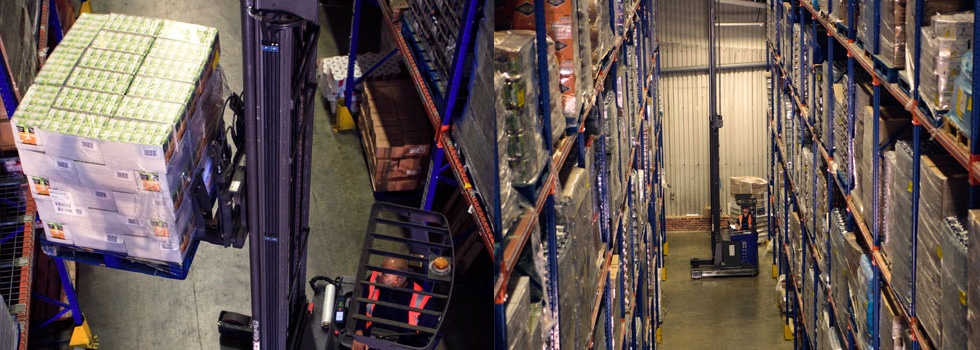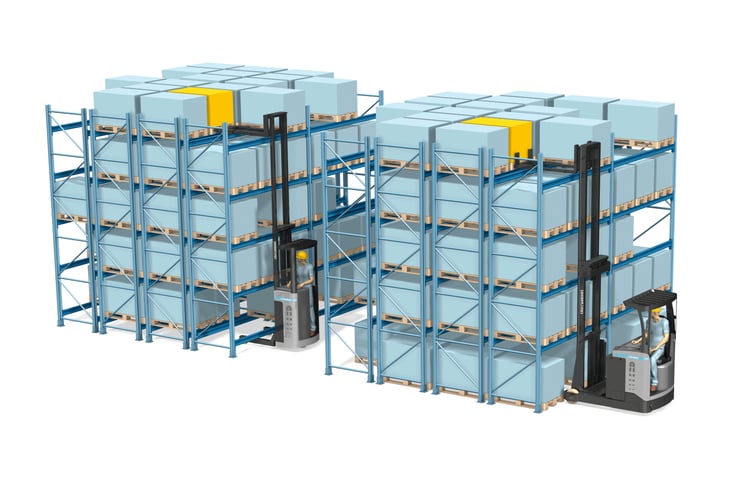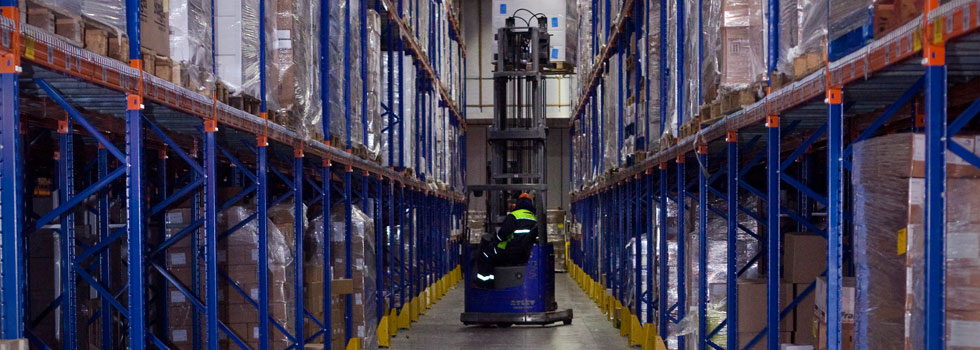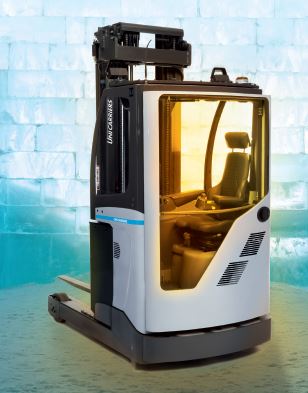
Cold store operations are one of the toughest material handling challenges.
Not only do the sub-zero temperatures affect your trucks’ battery capacity, electronics, lubrication, bodywork and drivers’ ability to operate the truck, the need for high storage density can reduce selectivity and throughput.
Dense storage systems
It is easier and cheaper to keep a cold store as heavily stocked as possible. This reduces the amount of energy required to keep the store at very low temperatures. The downside of this is reduced handling capacity so it’s important to strike the right balance between storage density and selectivity when you are designing your cold store.
 Conventional Adjustable Pallet Racking rarely provides the lowest storage cost in cold stores, since the floor utilisation is low, so it’s worth considering alternative racking technologies such as double-deep racking, mobile racking, drive-in racking, flow-through racking and satellite storage. The UniCarriers Logistics Analyser is a powerful simulation tool that allows us to design and calculate your cold store in order to achieve that important balance between density and selectivity.
Conventional Adjustable Pallet Racking rarely provides the lowest storage cost in cold stores, since the floor utilisation is low, so it’s worth considering alternative racking technologies such as double-deep racking, mobile racking, drive-in racking, flow-through racking and satellite storage. The UniCarriers Logistics Analyser is a powerful simulation tool that allows us to design and calculate your cold store in order to achieve that important balance between density and selectivity.
Optimising truck performance

Very cold temperatures reduce a truck’s battery capacity by about 1% per degree below 20°C. It might also disturb the truck electronics, make the oil thicker and more viscous, and make the metal (especially the welding joints) more brittle. Fortunately, all UniCarriers trucks are designed to perform optimally in the toughest conditions. In chill store operations, they need no modifications at all, but in cold store operations with temperatures down to -35°C, some adaptations are necessary to achieve efficiency and reliability. UniCarriers steel quality and welding techniques can ensure they function in temperatures of at least -35°C.
Avoiding condensation problems
But keeping trucks in temperatures of -27°C is not the main problem; it is constantly taking them from the frozen environment out into ambient temperatures and back again. Metal components when frozen expand when warmed up, which can create problems when moisture from the atmosphere refreezes. Condensation is perhaps the biggest technical issue for your cold store operations. At temperatures below the dew point of 6°C, the truck will be affected. If you have seen a truck coming out of a cold store and growing whiter from frost, it’s easy to understand how this can cause all sorts of problems. Outside of the cold store, the frost melts into water and in turn, when the truck re-enters the cold store the water will freeze to ice. If this happens a few times a thick ice coating will cover parts of the truck and could cause component damage.
Recommendations for your cold store trucks:
- Keep the truck in the cold store. When changing batteries, bring the battery to the truck and not the truck to the battery. If you must leave the cold store, stay outside long enough to allow the truck to dry completely. This time can be shortened by blowing hot air over the truck with big ventilators
- If you frequently drive in and out of the cold store, ensure your time spent inside cold store is as short as possible, and time outside as long as possible, so that the temperature of the truck never goes below 0°C
- If this is difficult, do the opposite, spend as much time as possible inside and as little time as possible outside. The idea here is that the temperature of the truck never goes above 0°C
Heated cabins
Another cold store challenge is keeping the operator warm. Wearing thicker and copious amounts of clothes, restricts the driver whilst operating the truck. The driver also struggles to interpret driving and lifting feedback. The trucks in the UniCarriers Tergo® series are available with specially designed heated cabins to help improve ergonomics and operator efficiency in cold store operations.

Industry endorsement
Work with a Materials Handling Company, who will help you design your cold store operation and fork lift truck fleet to deliver the highest operation output. This in turn, will significantly increase productivity and reduce costs for food and drink industries.
UniCarriers has been supplying trucks into the frozen sector for over 50 years and is a member of both the Food Storage and Distribution Federation (FSDF) and the British Frozen Food Federation (BFFF). All our electrically powered warehouse trucks are available in cold store variants – from pallet trucks and stackers, to reach trucks and VNA (Very Narrow Aisle) trucks – and we work closely with cold store customers to help them to anticipate and overcome the associated problems.







































Comment